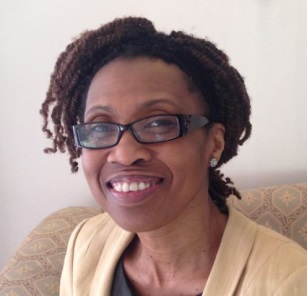Why inclusion matters in sustainable projects

How inclusive is your project? We rarely ever are quizzed about this. Does it really matter? Well, yes, it does if you want to make good on promises of delivering truly sustainable projects. You see sustainability and inclusion are not mutually exclusive. In fact, you can’t really deliver on one without the other. In this blog we’ll explore that link a little more closely. But before we do, let’s have a look at the evolving definition of sustainability.
Knowledge of sustainability was limited a decade or so ago. If you were asked about your carbon footprint then, you’d probably be as perplexed as an inquiry on inclusion today. Carbon footprint, net zero and social value were not part of our everyday project language previously.
But the tide is definitely changing. Altering organisational perspectives, COP 26, the hike in energy costs, the ongoing COVID-19 pandemic and social movements have put sustainability firmly on the project manager’s radar. Nowadays all projects are tasked with delivering on sustainability. It is increasingly a key focus for many large businesses and communities; consumers are also concerned on the ethical providence and carbon footprint of the goods and services they acquire.
Project funders, owners and clients are requiring that we demonstrate and deliver sustainability. In fact, for some clients, sustainability is the key driver in their project. For others we need to influence their requirements to ensure sustainable solutions are considered through the life cycle. We can no longer ignore it within our project delivery. We have no choice other than to be more sustainable in our personal and professional lives otherwise we eventually all go down together – adverse climate events are on the increase.
Sustainability is also now included within the refreshed APM Competence Framework – it is a fundamental competence for practitioners.
A broader perspective
We have gradually pivoted our perspective on sustainability and expanded it to be more holistic. In the past a ‘sustainable’ project was ‘financially’ sustainable and within budget. The expanded holistic view of sustainability now includes environmental and social elements – achieving a balance between financial, environmental and social. Sustainability is no longer a singular focus.
Inclusion categorised under social sustainability is part of the 17 UN Sustainable Development Goals (SDGs), adopted globally in 2015. It recognises tackling climate action as linked to ‘improving health and education, reducing inequality and spurring economic growth’. The majority of the goals are people focused, delivering broader value to society or social value.
Within the APM Body of Knowledge 7th edition the diagram depicting sustainability places it at the confluence of four dimensions – the environmental, social, economic and administration. Administrative includes legislation and regulation, health and safety and resource efficiency. This broader perspective of sustainability shifts the focus from the economic and the environment. It is also noticeable that diversity and inclusion is a new entry in the seventh edition.
Inclusive project practices
Social sustainability and social inclusion incorporate human rights, equity and equality as well as community. Can social sustainability and achieving inclusion be measured? What key performance indicators exist? What is it the extent of the project manager’s responsibility? Is it about how benefits are delivered to communities and stakeholders or the constitution of the project team? Why should we be concerned at this point, when already grappling with managing risks in an increasingly VUCA context and upskilling on sustainability.
It is useful to reflect on if we're fully exploiting opportunities to deliver social sustainability and inclusion. Our inclusive practices and behavioural muscles require development. That familiar term states ‘charity begins at home’ can be understood as beneficial behaviours and actions. Is the home front - our project teams and organisations – inclusive and does this extend to our projects conceived with a proactive socially inclusive vision? One indicator of inclusion is the diversity within our project team or organisations.
It is erroneous to view diversity and inclusion in isolation from the broader sustainability agenda. If linked to the wider bolder vision, it becomes part of a common sustainability thread running through our vision and strategy, also permeating our projects and programmes. It becomes embedded in our culture – behaviours, our systems - processes and practices informed by the administrative framework and driven by inclusive leadership.
A multitude of terms come under the inclusion banner. Do we all have a common understanding of inclusion? Does inclusion vary from social inclusion? Inclusion is an umbrella term requiring an element of scrutiny. It has long been paired with diversity but requires uncoupling, analysis and understanding. At its heart inclusion is a culture where the people we interact with – colleagues as well as other internal and external stakeholders - feel their different perspectives and needs are valued as relevant and taken into account.
The perception of respect and equity also permitting all to thrive are key, linking back directly the APM Body of Knowledge definition of social sustainability – human rights, equity, equality and also community. Where does community - ‘us’ vs ‘us and them’ - begin and end within your project, project team and organisational context? What are the inclusive stories we share with others? Perhaps that’s the starting point for reflecting on how inclusive our projects are and our inclusion ambitions.
This blog is the first in a series exploring inclusion holistically in the project planning and delivery context, adopting additionally the whole project life perspective. The author is keen to continue the conversation. To share your thoughts, challenges or successes in this area or to join a focus group contact the APM People SIG.
You may also be interested in:


2 comments
Log in to post a comment, or create an account if you don't have one already.
I echo what Teri brings out in this blog - for me, inclusivity sits at a slightly higher level than sustainability. Why? Because Inclusivity is something you do at a value and belief level - it is part of how you want to construct your best possible world. We make Inclusivity real because we want to. Sustainability, whilst also being something we may value or believe has more of its footprint in what we are actually able to do, often constrained by circumstance or environment. In other words it's more of a 'capability' thing. We make sustainability real where and when we can.
I think social sustainability is a really important element from the perspective of diversity and inclusion. And this includes considerations of social mobility and educational diversity in the range of people that we employ in our Projects and Programmes, to improve their life chances, as well as the quality of thinking and action in Projects. There is still a very long way to go on this - although there is an increasing focus on this subject, the actual behaviours that I see in Government project leadership are glacially slow to change. It's still largely the same people from the same backgrounds that make it into senior leadership roles - with the same predictable results. And this means that many of the brightest and best of our current generation are regrettably turning their backs on what could be great careers.